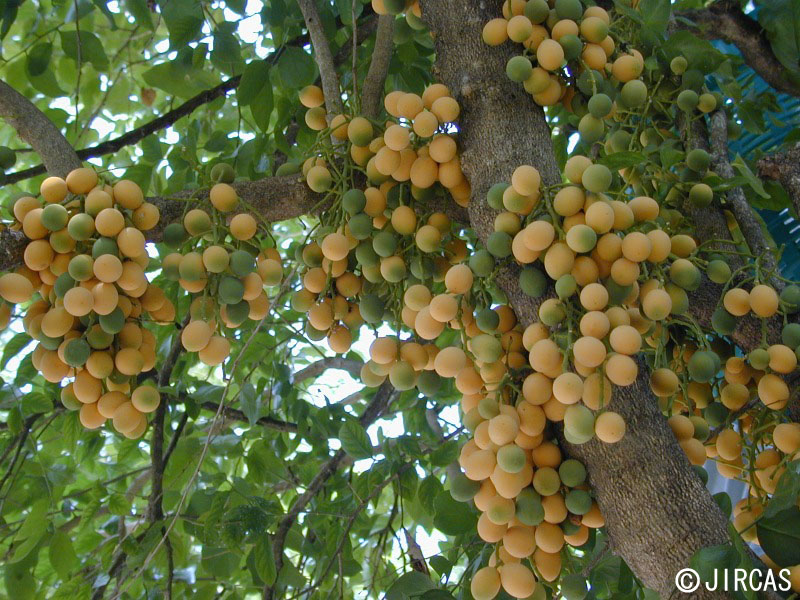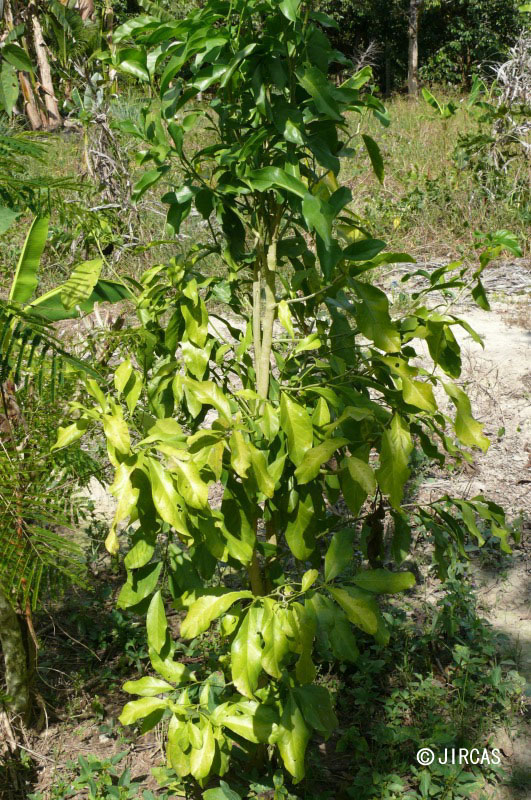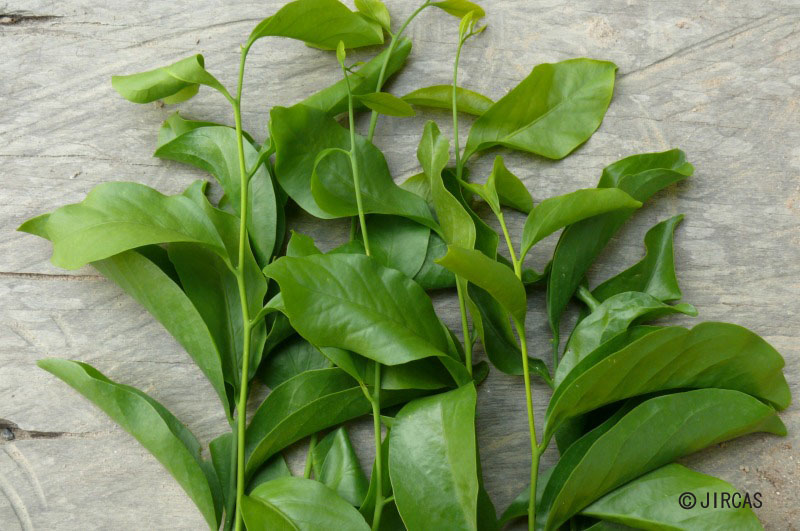Melientha sauvis Pierre (Opiliaceae)
- Scientific name
- Melientha sauvis Pierre
- Family name
- Opiliaceae
- Local name
- Phak waan paa
Wild tree, evergreen, up to 10 m tall. Leaves simple, alternate, elliptic to ovate, obtuse or acuminate, glabrous, glossy green above, leathery but brittle when bruised, 6–12 cm long, 2.5–5 cm wide; petiole 1–3 mm long. Inflorescence solitary or in group of racemes, on stem or leafless branches, rarely in leaf axils, 15–20 cm long. Flowers dioecious, 4- or 5-merous, green, tepals 1–1.5 mm long. Fruit a drupe, ellipsoid, with fleshy mesocarp, 2–3 × 1.5–2.0 cm, green when young, turning yellow at maturity.
Common in dry, deciduous forests, at elevations from sea level to 1,500 m a.s.l. Cultivated at larger scales in recent years. Propagated by seed sowing, as follows. Fully ripe seeds are collected, the fleshy mesocarp is removed, the naked seeds are cleaned and soaked overnight before direct seeding in a permanent site at a spacing of 2 × 3 m during the early rainy season (first or second week of May in Thailand). Seeds germinate within 3 months. Soil around the seedlings should not be disturbed during the first year. Seedling growth is very slow during the first 2 years, and should be accompanied by careful cutting or weeding by hand. Mulching and fully composted manure are recommended. The first harvesting stage is reached by the fourth or fifth year.
Young shoots, leaves, and flowers are considered a delicacy, and are among the most expensive vegetables grown in Thailand. They are cooked in soups or dried fish curries.
Caution: Inexperienced collectors frequently confuse this plant with the highly toxic related species Urobotrya siamensis Hiepko, as they are very similar and inhabit the same ecological habitat. The latter species differs in its bracteate, pendant raceme in the leaf axil, and smaller, bright red ripe fruit.
Young shoots, leaves, and flowers are considered a delicacy, and are among the most expensive vegetables grown in Thailand. They are cooked in soups or dried fish curries.
Caution: Inexperienced collectors frequently confuse this plant with the highly toxic related species Urobotrya siamensis Hiepko, as they are very similar and inhabit the same ecological habitat. The latter species differs in its bracteate, pendant raceme in the leaf axil, and smaller, bright red ripe fruit.






